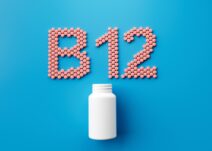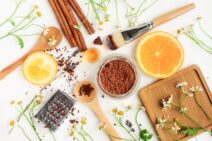
WholeFoods Magazine
FDA’s Red 3 Ban Opens Doors for Nature-Based Colors
This ban is the latest action in the global trend of shifting away from synthetic colors and ingredients.

The U.S. Food & Drug Administration’s (FDA) recent ban of Erythrosine, known as Red Dye No. 3 (Red 3), will require food and beverage companies to reformulate products that use the synthetic color by early 2027. This ban is the latest action in the global trend of shifting away from synthetic colors and ingredients in foods and beverages and is creating new opportunities for naturally derived colors.
Expanding Restrictions on Synthetic Colors
Red 3 has long been banned in other countries. The European Union prohibited the use of Red 3 in 1994, with similar restrictions in place in the UK, Australia, and New Zealand (1). Though some countries still allow the use of the synthetic color in foods and beverages, the FDA’s Red 3 ban will extend to foods imported into the United States, creating a broader effect on the global industry, as manufacturers who import products into the country are forced to reformulate to comply with new regulations.
Within the United States, California recently enacted restrictions on other synthetic colors used in food. Beginning in 2027, foods in California schools will not be allowed to contain Red 40, Yellow 5 and 6, Blue 1 and 2, or Green 3 (2). More states are considering similar restrictions on synthetic colors. Illinois, New York, Washington, and Pennsylvania are all working to enact regulations on the state level (3).
Consumers Push Towards Wholesome, Clean Label Ingredients
Reformulation of products to comply with the Red 3 ban gives food and beverage companies an opportunity to upgrade to naturally derived alternatives, something that studies show consumers already have an appetite for. According to Innova Market Insights, 35% of consumers are trying to limit their intake of synthetic ingredients (4). By opting for nature-based alternatives to synthetic colors, companies can avoid future reformulation if other colors face similar bans.
The combined pressure from bans and restrictions on synthetic colors, along with consumer preferences, point toward growth in the nature-based food color market. Future Market Insights indicates the global nature-based food colors market is expected to grow by 7.2% from 2023 through 2033 and surpass US $3.3 billion in 2033 (5).
Projected growth in nature-based colors can be attributed to an increasing desire for wholesome, more natural food products, as well as rising awareness for potential adverse effects caused by artificial food colors. Reformulation may seem like an unnecessary burden on manufacturers, but the benefits of shifting away from synthetic ingredients toward nature-based outweigh the initial challenges. Many food and beverage manufacturers have already adapted nature-based ingredients, widening their market reach and even reaching more premium markets.
Nature-Based Solutions to the Red 3 Challenge
Though necessary, the switch from Red 3 to naturally derived alternatives may feel daunting for manufacturers, who are often reluctant to switch from synthetic to naturally derived options due to traditionally held views surrounding stability concerns throughout the manufacturing process and the product’s shelf-life. While some nature-based color sources are prone to fading or degradation during processing, the industry has come a long way with nature-based color innovation.
For example, Lycored has drawn on years of lycopene-based color research to produce stable, clean label-friendly, and consumer-embraced color solutions, including alternatives to Red 3, that offer outstanding technical performance in challenging applications. Lycored’s range of nature-based red shades are proven to be stable in intense conditions. Lycored’s ResoluteRuby A and ResilientRed BF showed superior stability against artificial Red 3 when subjected to the harsh parameters of direct injection, packaging, storage and display conditions in UHT dairy and plant-based UHT. This innovation makes the ability to switch to reliable, nature-based hues easier than ever before. With particular appeal to wellness-minded consumers, Lycored’s lycopene-based red colors can simply be declared as “lycopene from red tomatoes” or “lycopene” on ingredient labels, and they are vegan-friendly. What’s more, the shades made possible by Lycored’s portfolio were favored over artificial alternatives in a survey commissioned on moms about colored milk options (6). Lycored’s portfolio is uniquely suited to stand in for Red 3 as more manufacturers make the switch—to appeal to consumers, and now to comply with new regulations.
Sources:
- Aleccia, J. (2025, January 15). FDA bans red dye No. 3 from foods, nearly 35 years after it was barred from cosmetics because of potential cancer risk. PBS. https://www.pbs.org/newshour/health/fda-bans-red-dye-no-3-from-foods-nearly-35-years-after-it-was-barred-from-cosmetics-because-of-potential-cancer-risk
- Henderson, B. (2024, March 21). Pennsylvania is latest state to introduce food additives legislation, while Kentucky urges FDA to take control. Food Safety Magazine. https://www.food-safety.com/articles/9331-pennsylvania-is-latest-state-to-introduce-food-additives-legislation-while-kentucky-urges-fda-to-take-control
- Innova Market Insights. (2022, July). Ingredients Insider: Trends in Color Ingredients
- Future Market Insights. (2023, February). Natural Food Colors Market. https://www.futuremarketinsights.com/reports/global-natural-food-colours-market
- Lippert, C. https://www.lycored.com/wp-content/themes/lycored/dist/images/true-colors-paper.pdf








